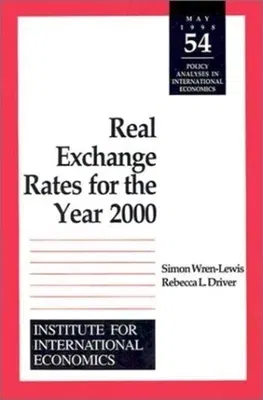Simon Wren-Lewis
(Author)Real Exchange Rates for the Year 2000Paperback, 1 May 1998

Qty
1
Turbo
Ships in 2 - 3 days
In Stock
Free Delivery
Cash on Delivery
15 Days
Free Returns
Secure Checkout

Part of Series
Policy Analyses in International Economics
Print Length
188 pages
Language
English
Publisher
Peterson Institute for International Economics
Date Published
1 May 1998
ISBN-10
0881322539
ISBN-13
9780881322538
Description
Product Details
Authors:
Book Format:
Paperback
Country of Origin:
US
Date Published:
1 May 1998
Dimensions:
22.91 x
15.44 x
1.27 cm
ISBN-10:
0881322539
ISBN-13:
9780881322538
Language:
English
Location:
New York
Pages:
188
Weight:
312.98 gm